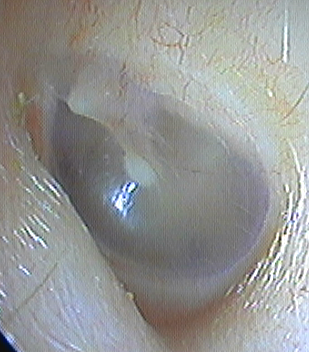
A Hole in the Ear Drum
One of the most common complications of a middle ear infection is a hole that can develop in the ear drum. The vast majority of the time, when this happens, it heals on its own. However, about 1 to 5% of the time, a persistent hole will remain. This can lead to various complaints such as a decrease in hearing, sound distortion, and ringing in the afflicted ear. Additionally, as opposed to ear tubes which are usually a much longer and narrower hole, a hole in the eardrum is much more likely to allow water to enter the middle ear space (an ear tube resists this due to the capillary action and surface tension forces of molecular water). This can lead to frequent drainage and ear infections.A chronic draining ear can sometimes be a sign of a chronic (or long lasting) hole in the ear drum. This can further be complicated by skin from the outside of the ear drum growing into the middle ear space. This is a condition called a cholesteatoma, which requires surgery. This is when the external skin grows in the confined space of the middle ear creating an expanding ball of dead skin. Outside of the ear drum, this skin will migrate out of the ear canal and flake off, usually inside the normal wax. However, inside the middle ear, this dead skin cannot migrate causing a build-up. This buid-up will slowly erode the surrounding bone and can press against the wrapper around the brain, or it can erode into the inner ear, producing hearing loss and dizziness. For this reason, a draining ear must be evaluated by an ear specialist.
If you have been suffering from a hole in the eardrum, or ear drainage, make an appointment with Dr York today, CLICK HERE!